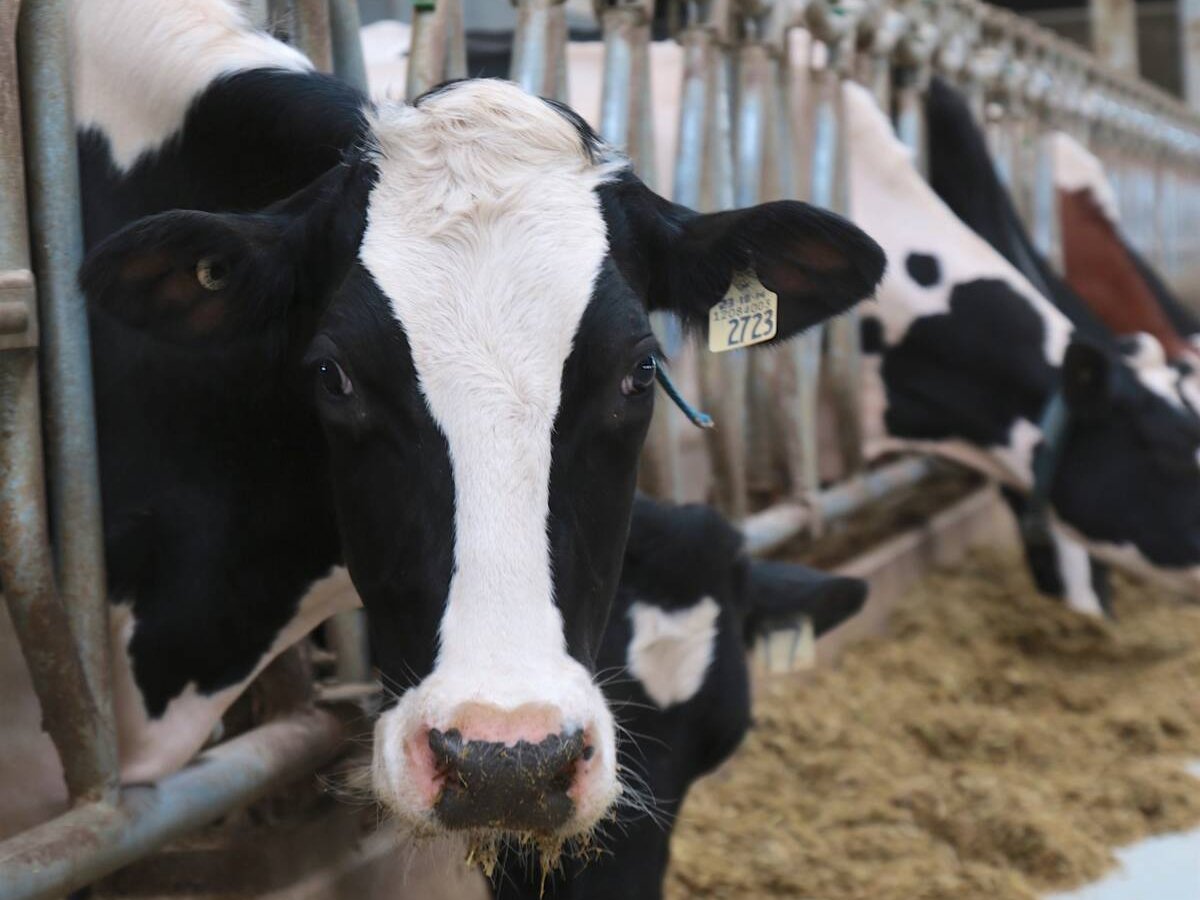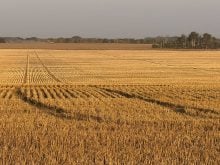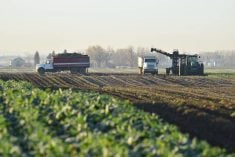EDMONTON – United Grain Growers will continue to focus on livestock as a way to buoy the company balance sheet over the next three to five years, says Brian Hayward, chief executive officer.
“We believe that the growth opportunities within the livestock industry will be superior to the growth opportunities that exist within the grain industry,” Hayward told shareholders and members at the company’s annual meeting last week.
The livestock services operations of the company have been the “really bright spot” for the company in the 2000 year, said Hayward. Earnings for the division, before interest and taxes, were a record $9.1 million, up 84 percent.
Read Also

The Organization for Economic Co-operation and Development lauds Canada’s low farm subsidies, criticizes supply management
The Organization for Economic Co-operation and Development lauded Canada’s low farm subsidies, criticized supply management in its global survey of farm support programs.
Hayward said it’s hard to believe, but livestock was a troubled area of UGG in the early 1990s. During the past decade the company invested and expanded capacity in feed mills, which is the primary focus of its livestock section. It also has a multimillion investment in the Puratone group, the second largest pig producer on the Prairies.
The company will continue to stress investment in feed manufacturing since it has often been the limiting factor in livestock expansion, Hayward said.
While livestock boosted the bottom line, the traditional grain markets dragged the company down. Volumes through UGG’s elevators’ grew by 11 percent, but competition from other grain companies and low volumes across the Prairies took a toll.
“The bottom line fact is that shipping volumes in fiscal 2000 were the second worst in a decade, 1999 being the only year where the company experienced lower throughput,” he said.
“We did not realize the revenue lift that we would normally expect, due to pressure on margins.”
It was a similar story with the company’s crop production services. Sales of products were sluggish because of poor grain prices. Fertilizer sales were up 14 percent from the year before, but the combination of an overall poor economy and increased competition meant gross profits for the business sector slipped by $2.8 million to $62 million.
In the end, the company’s net income declined to $2.2 million from $3.6 million the year before.
“This is not an acceptable level of profitability,” Hayward said.”We must improve the situation.”
Along with increased emphasis on livestock, the company is looking to technological advances in the seed industry to create new opportunities for farmers and the company.
“At a company level we intend to put continued priority on expanding UGG’s crop production services business.”
Significant drop
Hayward said shortly after the company went public in 1993, two-thirds to three-quarters of the operating income was from grain operations. Now grain income accounts for only 35-40 percent of the total operating income.
UGG still believes there is long-term growth in grain and won’t abandon the grain end of the company.
The internet will have a key role in the future of the company. While profits were flat in the farm business communications division, the company feels there is opportunity in the internet, said Hayward.
“Another growing priority is to invest in creating a content portal in the area of the internet.”
The company sees possibilities in the fields of finance and risk management. During the meeting, it announced the creation of UGG Financial, a joint initiative between UGG and Bank of Nova Scotia. A key part of this agreement allows farmers to match payment terms to cash flow.
In the short term, UGG’s priorities will be to sustain its existing balance sheet and forge new alliances to improve shareholder value.
Ted Allen, chair of UGG, said the company is committed to improving share value.
“We will continue to pursue to the best of our ability to maximization of shareholder value for all shareholders of the company.”














